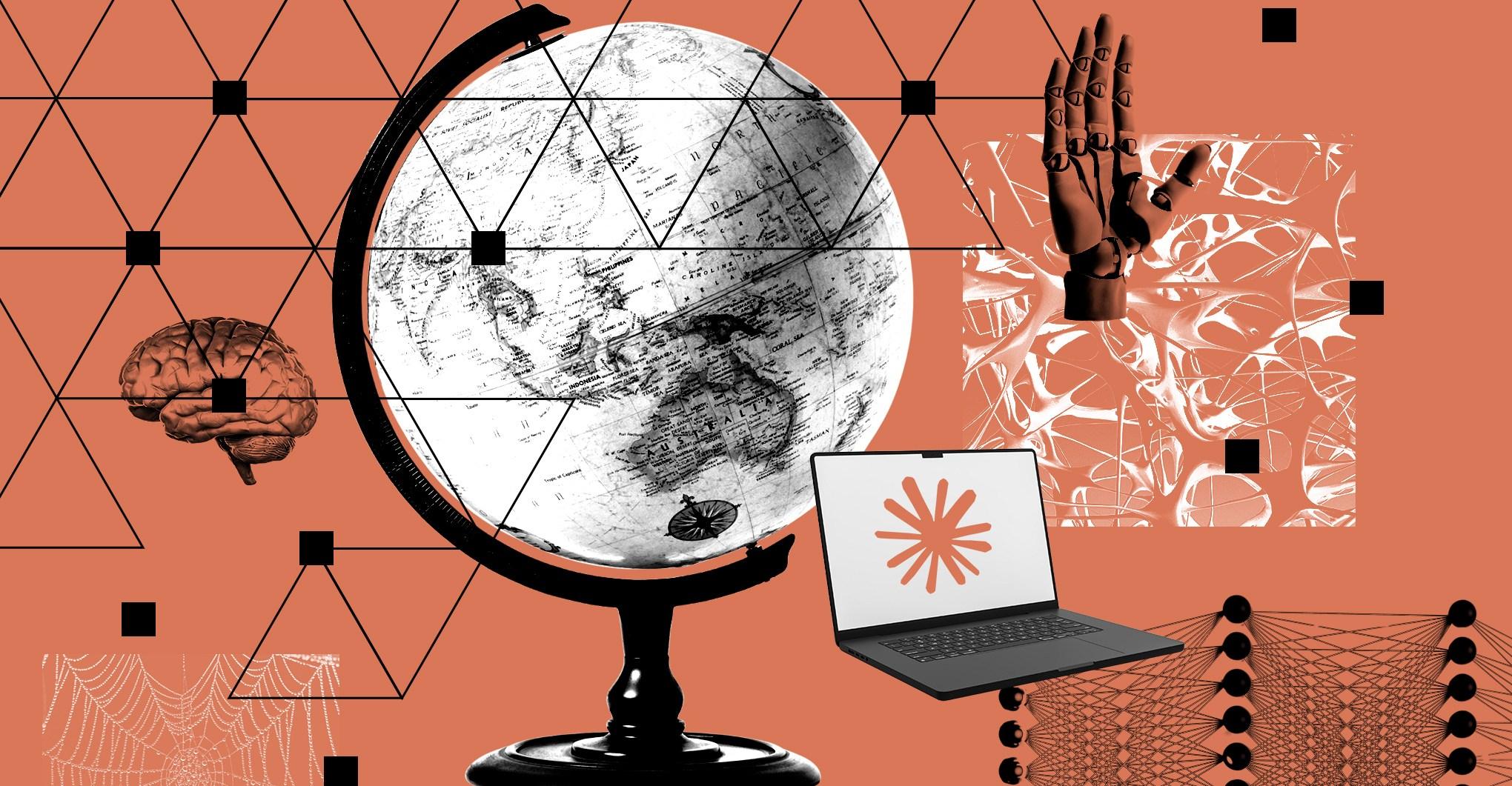In 2015, when Inside Out hit theaters, Lisa Damour watched the Pixar movie with her 11-year-old daughter. The film felt personal: Inside Out depicts the emotions of an 11-year-old named Riley. Riley is now 13 in the sequel, Inside Out 2, out June 14, and Damo…

Published ایک سال قبل on جون 15 2024، 12:00 شام
By Web Desk

In 2015, when Inside Out hit theaters, Lisa Damour watched the Pixar movie with her 11-year-old daughter. The film felt personal: Inside Out depicts the emotions of an 11-year-old named Riley. Riley is now 13 in the sequel, Inside Out 2, out June 14, and Damour will be watching alongside another 13-year-old: her younger daughter. “The strange mapping of my family life,” Damour says, “is very profound for me both personally and professionally.” Damour is well-versed in the science of teenage emotions. In addition to her work as a psychologist, she’s written three books on teens and their often intense emotional development. Her experience made her well qualified to help consult on Inside Out 2 as Riley grapples with more grown-up emotions like anxiety, envy, embarrassment, and ennui, all of which are new characters in the film. Damour wasn’t alone in providing expert guidance to the creative team. Emotion scientist Dacher Keltner, a professor of psychology at the University of California Berkeley and the director of the Greater Good Science Center, also served as a scientific adviser, helping shape what new emotions would appear in the film and how to accurately present the science of emotions on screen. “They get it right,” Keltner says of Pixar. “They take that science seriously.” I spoke with Damour and Keltner individually about their roles on Inside Out 2, the psychology of teenagers, and how to translate that knowledge to the screen. The following conversations have been edited and condensed for clarity. Allie Volpe Tell me about your role working on the film. What were your conversations like with the creatives? Lisa Damour I’m a psychologist who specializes in teenagers and I’ve written a lot about teenage girls. Our relationship began in May 2020 with [director] Kelsey Mann and [screenwriter] Meg LeFauve. I hop on the Zoom call, and they’re both holding Untangled, which is a book I published in 2016, and Under Pressure, which is a book I published in 2019. [The creative team and I have] been in a four-year conversation talking about anxiety and perfectionism in adolescence and the changing brain and emotions. Along with Dr. Keltner, I saw drafts of the film, and we gave guidance about how to really bring it fully in line with the science, which they’ve done an extraordinary job with. Dacher Keltner It really began on the first one, Inside Out. [Executive producer] Pete Docter called me in. I thought they’d be interested in strategic questions about the film, [but] they’re just interested in science, like how many emotions are there? What do they do to our minds? How do they influence your identity or your memory? With Inside Out 2, I remember going in with Meg and Kelsey, and they’re like, “Okay, she’s 13, she’s a teenager. What happens emotionally?” That got [us] to anxiety; envy, the FOMO emotion, embarrassment, which I’ve done a lot of research on in my lab. Mainly the emotions of moving from a focus on family to your social network [as a teenager], and all the dynamics that come out of it. [Meg and Kelsey asked] technical questions, like what muscles move in the face when you feel envy? Or what does anxiety do to our sense of the future? Allie Volpe How much did you consult on the look and feel of these characters? Dacher Keltner I visited Pixar a lot. I studied the human voice. There are really sweet vocalizations in Inside Out that came out of this science, like moments of sarcasm that came out of those conversations: This is what a sarcastic voice sounds like and why it makes you so mad. There’s stuff on the face in this film that’s remarkable. Just zeroing in on particular facial muscle movements and what they mean. I studied the face for 35 years, and they got it right. So I’d pop by, talk about the science: These are the facial muscles, here’s some papers, here’s how we can communicate with emotion. Allie Volpe What goes on developmentally in a teenager’s brain for these new emotions — anxiety, envy, embarrassment, and ennui — to be so important in the story? Lisa Damour One of the things that happens when people become teenagers is that their brain becomes more sophisticated, and it allows for self-conscious emotions. Before age 13, kids are concrete in their thinking. They can’t always see things from another perspective. Then around 13 or 14, the ability to picture oneself on the outside, to imagine different scenarios, arrives as a result of brain development. With that arrival comes the ability to be embarrassed and to imagine what other people think of you. Or to have envy, to want something somebody else has and to want to know why you don’t have it. Ennui is so funny and wonderful and really maps onto the natural disdain and over-it-ness teenagers can have for everything. Then, of course, anxiety is a major player in this movie. What anxiety requires is the ability to imagine and anticipate. Fear is our response to the threat right in front of us, whereas anxiety is picturing things that might happen. Dacher Keltner Sex hormones hit and they start thinking about dating and flirting and worry about their appearance. Kids move from the world of childhood and concrete fears to everything becoming social. Thirteen-year-olds are much more aware of social dynamics: What do other people think of me? Are they judging me? What’s my reputation? Why didn’t I get invited to that? Envy is about your status, how does it compare to others? Do they get stuff that you don’t get that you deserve? Anxiety: What do other people think of me and what will happen to my [self]-esteem? Embarrassment is a social emotion. Ennui, how we express to adults this is absurd, this is boring. It’s about becoming really social. Allie Volpe Were there quintessential teenage experiences, like being annoyed at your parents or feeling like you’re wearing the wrong clothes, that you thought would be effective at exemplifying these emotions? Lisa Damour I talked with [the Pixar team] a lot about perfectionism. Perfectionism, especially in adolescent girls, and especially when anxiety is at the controls, is a very real and extremely challenging issue. We see it across all genders, though when we look at the data we see it a bit more in girls. A lot of that arises out of their wish to please. We socialize girls more than boys to be pleasing to the adults around them. They get a lot of reinforcement when they do it. When girls or highly perfectionistic boys bring their A-plus game to everything, adults tend to cheer them on and encourage them to do more of that. It can backfire in terms of making them feel like their value rests on making no errors and having no areas where they’re struggling. The center of this movie is about Riley trying to make a hockey team. So if they come into that with this sense of the only way to get this right is to make no errors, it’s a recipe for anxiety and discomfort. Dacher Keltner There’s a scene in the car with Riley and her two friends wondering what the other person is thinking and thinking they’re judging them. That’s just what happens when you’re a teen. Allie Volpe Were there conversations about what other potential emotions could be included? Lisa Damour Yeah, there were. This meant identifying about 20 or 25 distinct emotions. They got it down to nine, which is pretty impressive. There’s all sorts of characters that you could bring on. But I think they made a good call with the four that they added, and they all serve a purpose and they all match what it means to be a teenager. Dacher Keltner [Psychologist] Paul Ekman studied six emotions: anger, sadness, fear, disgust, joy — which is Inside Out — and then surprise, which didn’t make Inside Out. In my lab, we studied awe and compassion and shame and embarrassment and love and desire and interest and boredom. When I went in and talked to Kelsey and Meg, they’re like, “What emotions should we add?” I brought up shame. You get humiliated online and you feel ashamed. They really grappled with it. They sketched out scenes, did some animation, but they felt maybe another time would be better. I always pitch them on the prosocial emotions, compassion and awe, in particular, because they’re so important. They wanted to do an emotion that’s [brought] teenagers [to a place of] like, “You adults are wrong. Your music is outdated, your dance moves suck.” There are some interesting examples, like contempt. But that was toxic or hard to characterize. I really pitched and had talked about indignation. “You think that’s a good movie? You think that’s good food?” Teenagers are great at that. They thought about it and they drew it up, but they stuck with ennui, which I think is going to be fun for people. Allie Volpe Many people might think anxiety is only an uncomfortable emotion. How does this movie counter that belief? Lisa Damour Anxiety has a protective function and it’s not necessarily always negative. Most people don’t know that. But we find ourselves in a moment in a culture where we’re pretty uneasy about any emotions that are uncomfortable, and we’re quick to pathologize negative emotions. They did a brilliant job in this film of dealing with a range of what anxiety can be. Anxiety absolutely is an essential part of life. It does protect us, it does help us imagine and anticipate things that could go wrong, it does help us course correct and make better decisions. It can tip to being out of control. It’s so valuable for anxiety in this movie to hold down both the healthy and the unhealthy side of it so that families can discuss what kinds of anxieties [they might be feeling or seeing]. Dacher Keltner That is the central mission of the Inside Out movies. The world needs to understand that sadness is okay. Sadness has this wisdom to it. This film tackles anxiety and, to me, a lot of Western thinking about emotion pathologizes emotions. It stigmatizes them. The film tells families we need all the emotions. Embarrassment feels uncomfortable: Oops, I called somebody by the wrong name. I feel embarrassed. It tells your mind I don’t want to make that mistake again. I will learn and I’ll try harder. So central to these films is the idea that the emotions are healthy, and there’s new research showing if you have a rich complex life of emotion and you feel them all in the right way, that’s the best place to be.

The end of fur just got a lot closer
- 11 hours ago

America has a new clash of civilizations — with European liberals
- 11 hours ago

The twisted reason why Trump is bombing Venezuelan boats
- 12 hours ago

It’s their job to keep AI from destroying everything
- 5 hours ago

Did Trump accidentally boost direct giving?
- 12 hours ago

The best thing I bought this year: a Zippo-sized rechargeable flashlight
- 14 hours ago

Apple Music Replay 2025 is back with new listening stats
- 14 hours ago

Some of our favorite Cyber Monday deals are still kicking
- 14 hours ago

Google is experimentally replacing news headlines with AI clickbait nonsense
- 14 hours ago

We found 25 great laptop deals you can still grab for Cyber Monday
- 5 hours ago

The still-great AirPods Pro 2 are $85 cheaper than the latest model for Cyber Monday
- 5 hours ago

Ray-Ban’s Meta smart glasses are even cheaper than they were on Black Friday
- 4 hours ago
You May Like
Trending




